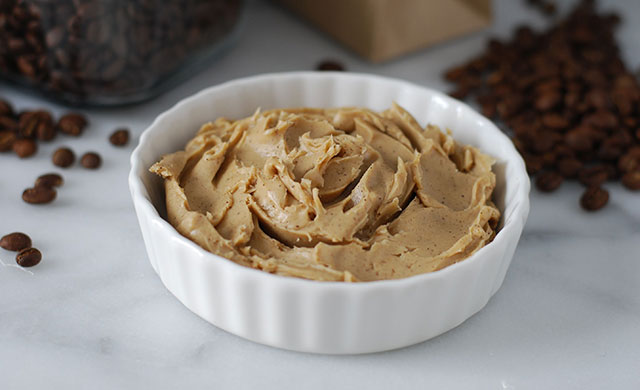Have you ever truly contemplated coffee? What it is? Where it comes from? Do you have any idea of what is done to it to extract the flavours that make it one of the world’s most popular beverages?
Well, recently I got to spend time at a coffee roastery where the roasters – a father and son team – showed me just how it is done. Let me assure you, there is a lot going on and many variables to consider before you can pour hot water over your grinds for your favourite breakfast beverage.
Coffee beans are matured in the coffee cherries and then processed and dried to be sold as unroasted coffee beans. These beans are green in colour and have beany and grassy aromas, ie they smell nothing like coffee at all.
The beans require roasting to develop their aromas, which consist of between 800 to
1 000 different compounds.
Each batch of beans is unique, and it is the roaster’s task to extract the right aromas in the right combinations and right ratios by applying heat to the beans with a specific roasting machine in order to develop an end-flavour for a specific coffee bean. Recording the effects of actions and decisions during the roasting process on the end-flavour of the coffee is called a roast profile. The roast profile has the same purpose as a recipe in cooking: It ensures consistency in aroma and flavour, something that is very important for clients of commercial roasters.
Roast profiles are developed over time and are unique to the roaster, the coffee bean and the roasting machine. Good coffee roasters stand and fall by their ability to retrieve the best flavour from each bean and that process is a mixture of creativity and science. Ultimately, roasting involves “reading the beans”, ie observing and responding to the changes in the beans caused by applying heat over time.
There are several key moments and elements in the process that forms the backbone of how a batch of coffee is roasted.
Charge or drop in temperature: This refers to the starting temperature of the roaster when the beans are loaded to start the roasting process.
Turning point: This is the point of equilibrium between the temperature of the beans and the drum. Immediately after loading the beans, the temperature of the roaster will begin to drop, as the cold coffee absorbs the heat from the roaster. The turning point is reached the moment the coffee has absorbed enough heat that the temperature stops falling and begins to rise again.
Rate of rise: This measures the speed with which the temperature inside the beans increases as a result of the increased heat from the burners inside the roaster. It is expressed as the amount of degrees per minute.
Timing of colour changes: This measures the time it takes for the beans to change colour – from green to yellow to bread and beyond.
Time and temperature of first crack: Throughout the roast, the coffee beans lose moisture, sugars caramelise and a multitude of other reactions take place. When the beans reach a certain temperature, moisture and gas get released along the seam of the bean and this results in a popping or cracking sound. This is the first crack. The time and temperature at which the coffee bean cracks for the first time is recorded in the roast profile.
Time between first and second crack: Measures the time between the first and second crack in the beans.
Timing of first crack to end roast time: This is often called the roast development time, ie the time during which most of the flavour of the coffee will be developed. It is a small window of opportunity during which the actions of the roaster will determine how much acidity and body the roasted coffee will have. The longer the roast development time, the more body but less acidity the coffee will have. For you and me, that means that longer roasted coffee will have more chocolate and less fruity notes. The entire time in roast development lasts generally between 45 seconds and two minutes.
Once the roasting is done, the coffee beans are decanted from the roaster and stirred to speed up the cooling process. When coffee is roasted, gases – including carbon dioxide – form inside the bean. To brew the coffee immediately after it is roasted would have a negative effect on the taste and profile of the coffee. Thus, the roasted beans are left to de-gas for a few days, before they can be ground or shipped as whole beans.
• 1⁄4 cup fresh cream
• 3 tablespoons sugar
• 2 tablespoons canola or other neutral oil
• 2 teaspoons finely ground espresso powder
• 1⁄8 teaspoon salt
• 1⁄2 cup unsalted butter, softened
1. Cook cream, sugar, oil, espresso powder and salt in a small saucepan over medium heat, stirring until just simmering and solids are dissolved, about two minutes. Transfer to a small bowl and chill until cool, about 30 minutes. 2. Beat butter on medium-low speed in the bowl of a stand mixer fitted with the paddle attachment (or in a food processor) to combine. With the motor running, drizzle in cream mixture.
Increase speed to medium-high and beat until combined and smooth. Transfer to a resealable container and chill for at least three hours. Let sit at room temperature for at least 15 minutes before serving. Serve on toast or pancakes.
Stay informed with The Namibian – your source for credible journalism. Get in-depth reporting and opinions for
only N$85 a month. Invest in journalism, invest in democracy –
Subscribe Now!








